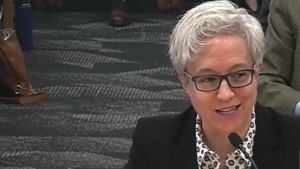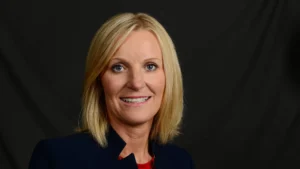
Committees Consider Major Housing Bill, Hear Testimony on Measure 110 Fixes
Oregon lawmakers have more money to spend, Governor Kotek has a plan to spend most of it and witnesses testified for four hours on recriminalization of drug possession in a busy first week of the 2024 legislative session.
The quarterly economic and revenue report forecast a $76 million uptick in tax revenue for the biennium, which combined with unbudgeted revenue gives lawmakers around $560 million to spend this biennium. Kotek has proposed spending $500 million to boost housing production to meet her annual goal of 36,000 new units, which is double current production levels.
State economists said the additional revenue comes from a projected increase in corporate income taxes, reflecting an increase in the state’s corporate tax base. They said reduced inflation rates, relatively high consumer spending and full employment has stabilized Oregon’s economy.
 Personal income taxes remain the major contributor to state coffers, projected at $21.2 billion representing 80 percent of Oregon’s general fund. As they have before, state economists suggested personal income tax revenue may flatten in the future because of Oregon’s aging population, low birth rates and sluggish in-migration.
Personal income taxes remain the major contributor to state coffers, projected at $21.2 billion representing 80 percent of Oregon’s general fund. As they have before, state economists suggested personal income tax revenue may flatten in the future because of Oregon’s aging population, low birth rates and sluggish in-migration.
“We’re basically near an all-time high in employment,” state economist Josh Lehner told lawmakers. “The only time in our recorded history with a slightly higher percentage of Oregonians with jobs was at the height of the tech boom in the late 1990s,”
The sour note in the report was that liquor revenues have fallen short of previous forecasts by $132 million, a sign sales have tailed off after the pandemic. The drop in liquor revenue coincides with higher-than-expected costs to build and install a conveyor system at a new OLCC warehouse in Canby. Plans already have been jettisoned to move OLCC offices to Canby. Instead, the agency will lease space in a state office building in Portland’s Lloyd District.
Higher tax collections have led to more contributions to the state’s Rainy Day Fund and Education Stability Fund. The economists predicted the funds will have accumulated a combined $2.9 billion by next year. The funds were created to shore up state spending during economic downturns.
Housing Production Boost
Kotek testified before the Senate Committee on Housing and Development on the need for a $500 million package to boost housing production as provided for in Senate Bill 1537.
 “The size of this challenge requires a full menu of solutions, which is what you see in this bill,” Kotek said. “I believe this bill is bold and balanced. It’s comprehensive. It will provide the spark to jumpstart the building of new housing that we need to see across the state.”
“The size of this challenge requires a full menu of solutions, which is what you see in this bill,” Kotek said. “I believe this bill is bold and balanced. It’s comprehensive. It will provide the spark to jumpstart the building of new housing that we need to see across the state.”
The measure is intended to funnel money in support of middle-income and affordable housing construction by spending on roads, sewers and climate-friendly projects. The bill also creates a one-time window for cities to expand their urban growth boundaries, a provision opposed by environmental groups who warn it could jeopardize high-value farmland. City officials have expressed concern that some development requirements are too stringent for many cities to qualify for funding.
Rep. Vikki Breese-Iverson, R-Prineville, and vice chair of the House Interim Committee on Housing and Homelessness, warned that one-time provisions could require multiple years of funding.
Developers generally support Kotek’s initiative, which would allocate $200 million for roads, pipes and sewers for local communities and prioritize shovel-ready projects that can more quickly lead to new housing. Their concern is that $200 million won’t be enough.
Underscoring their point, when lawmakers asked Oregon cities to submit their infrastructure project needs connected with new housing production, 85 cities responded with 225 projects costing almost $828 million.
 “I don’t think there’s enough money to buy us out of the problems that we have with infrastructure,” said Jodi Hack, CEO of the Oregon Home Builders Association and a former lawmaker. “Cities have projects that already have gone through the planning process and are just sitting there in need of some infrastructure.”
“I don’t think there’s enough money to buy us out of the problems that we have with infrastructure,” said Jodi Hack, CEO of the Oregon Home Builders Association and a former lawmaker. “Cities have projects that already have gone through the planning process and are just sitting there in need of some infrastructure.”
Kotek’s proposal allocates $200 million to promote affordable housing development, which doesn’t always pencil out for developers, especially when interest rates remain relatively high.
Here is a detailed description of Kotek’s proposal: Components include infrastructure needs by local governments, $200 million; financing for moderate-income housing, $200 million; site acquisition, $40 million; energy-efficiency and other measures to adapt new housing for climate change, $20 million; site mitigation and readiness, $10 million; technical assistance for local governments, $10 million; infrastructure planning for local governments, $5 million; a new Housing Production Assistance Office to ease barriers to construction, $5 million.
Making Changes to Measure 110
Four hours of testimony, some delivered online, showed the sharp divisions of opinion about how to address street drug use, fentanyl overdoses and inadequate addiction treatment facilities.
There are three legislative proposals under consideration that all would recriminalize small amounts of drug possession. The two measures introduced by legislative Republicans would impose a more severe penalty than the Democratic version. Both aim to redirect people who receive tickets into treatment. A well-financed group has promised an initiative this fall if the legislature fails to act decisively enough.
The testimony included witnesses (and legislators) who called Measure 110 a failure that has allowed people to keep using drugs without treatment in what amounts to a “live and let die” policy.
Measure 110 supporters said returning to a “war on drugs” policy won’t have any better results than when it was in effect for 50 years. A spokesman for public defenders warned there aren’t enough attorneys to defend drug users in court. Addict recovery spokespeople said recriminalizing drug possession won’t increase badly needed addiction treatment facilities and trained staff.
 “Instead of handcuffs, people need more detox, more supported and recovery housing, more rapid response on our streets with outreach workers trained to get people into care,” said Tera Hurst, Executive Director of Health Justice Recovery Alliance. “If the legislature would focus on proven strategies that work, then providers, law enforcement and stakeholders could come together in partnership and more people would get the help they need.”
“Instead of handcuffs, people need more detox, more supported and recovery housing, more rapid response on our streets with outreach workers trained to get people into care,” said Tera Hurst, Executive Director of Health Justice Recovery Alliance. “If the legislature would focus on proven strategies that work, then providers, law enforcement and stakeholders could come together in partnership and more people would get the help they need.”
Measure 110 advocates also disputed claims Measure 110 is responsible for a spike in fentanyl overdoses. They pointed to data showing overdoses increased when fentanyl become more widely available in Oregon and noted overdoses have risen in Washington after a court nullified its version of Measure 110.




